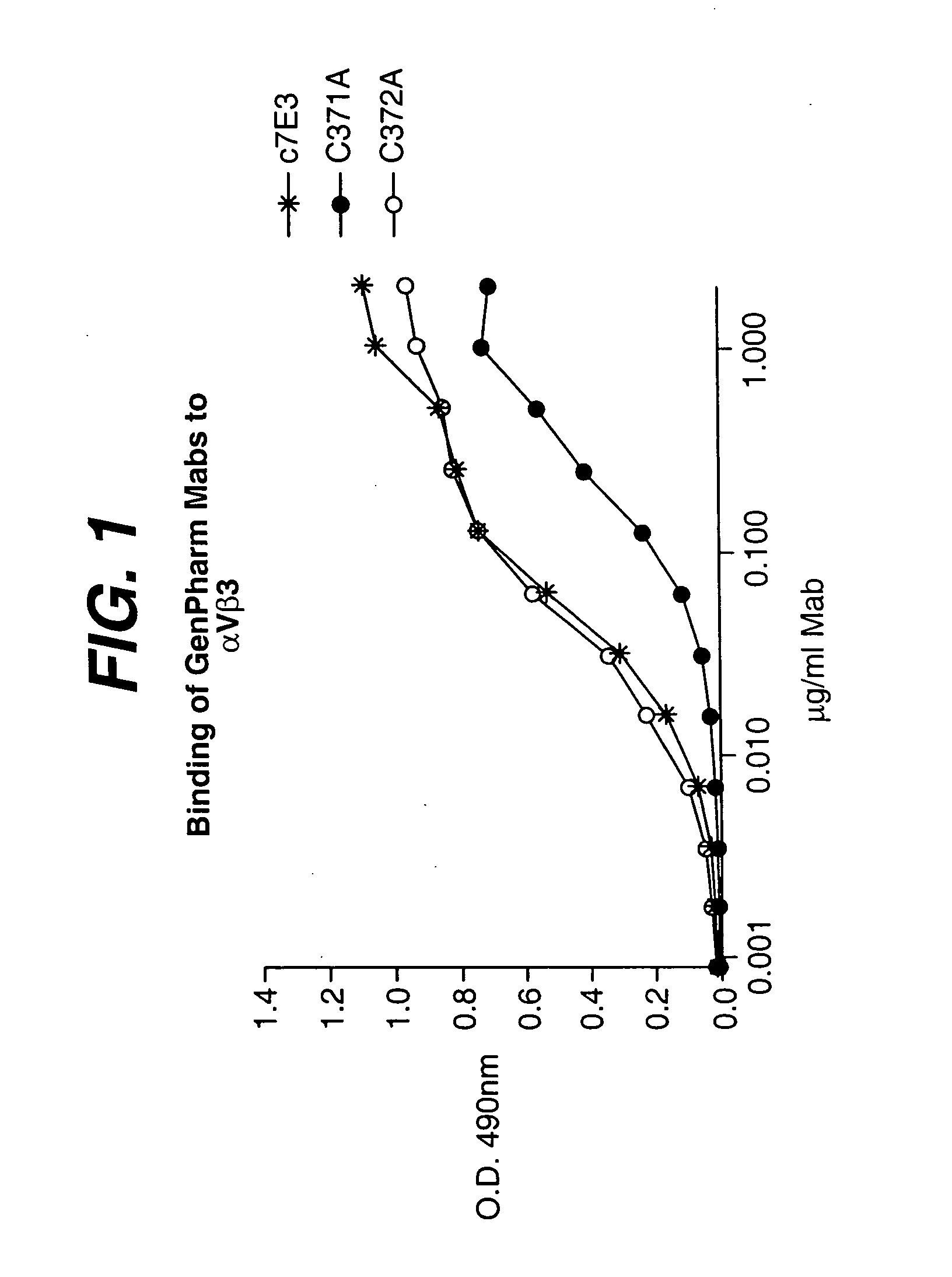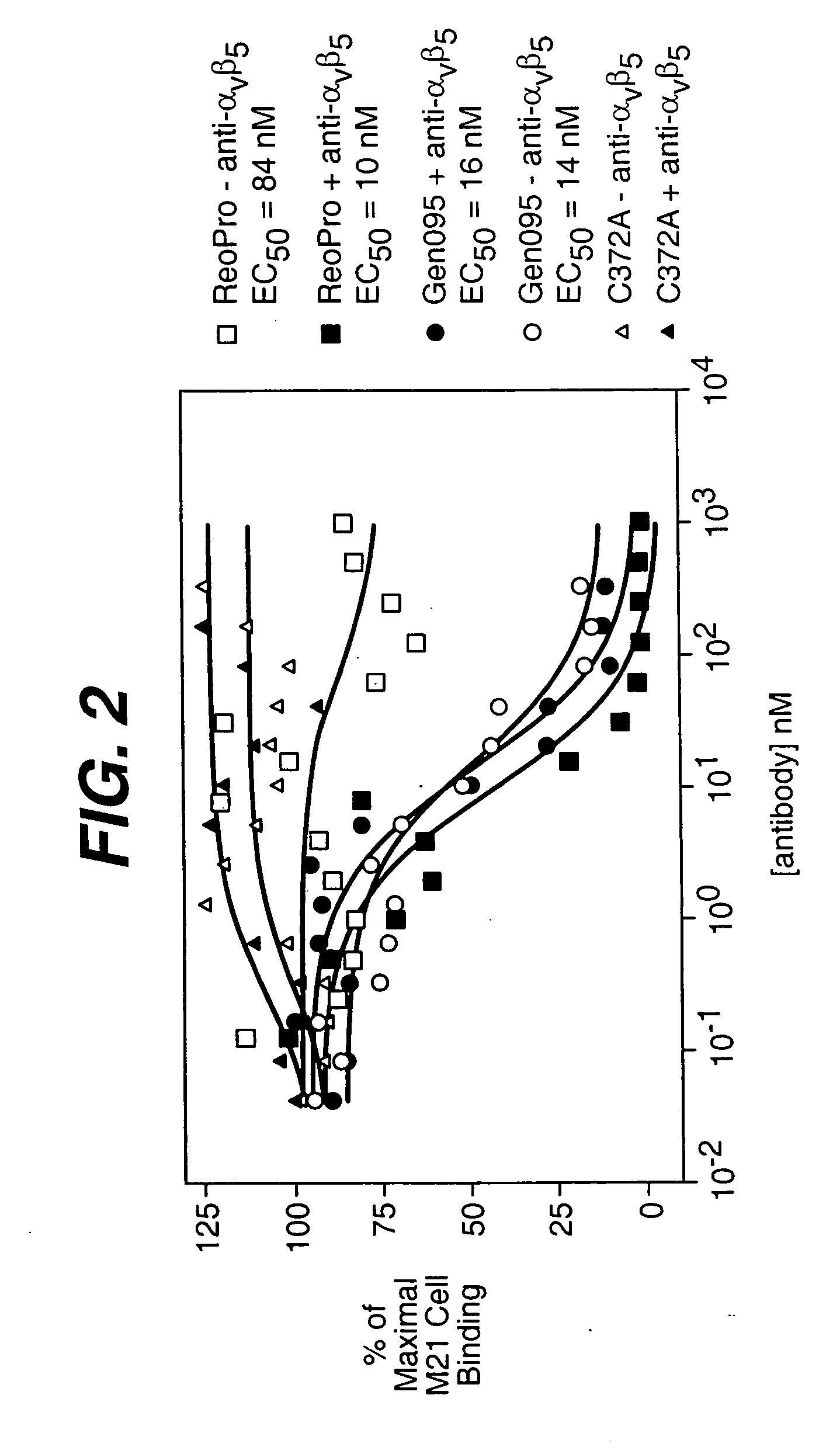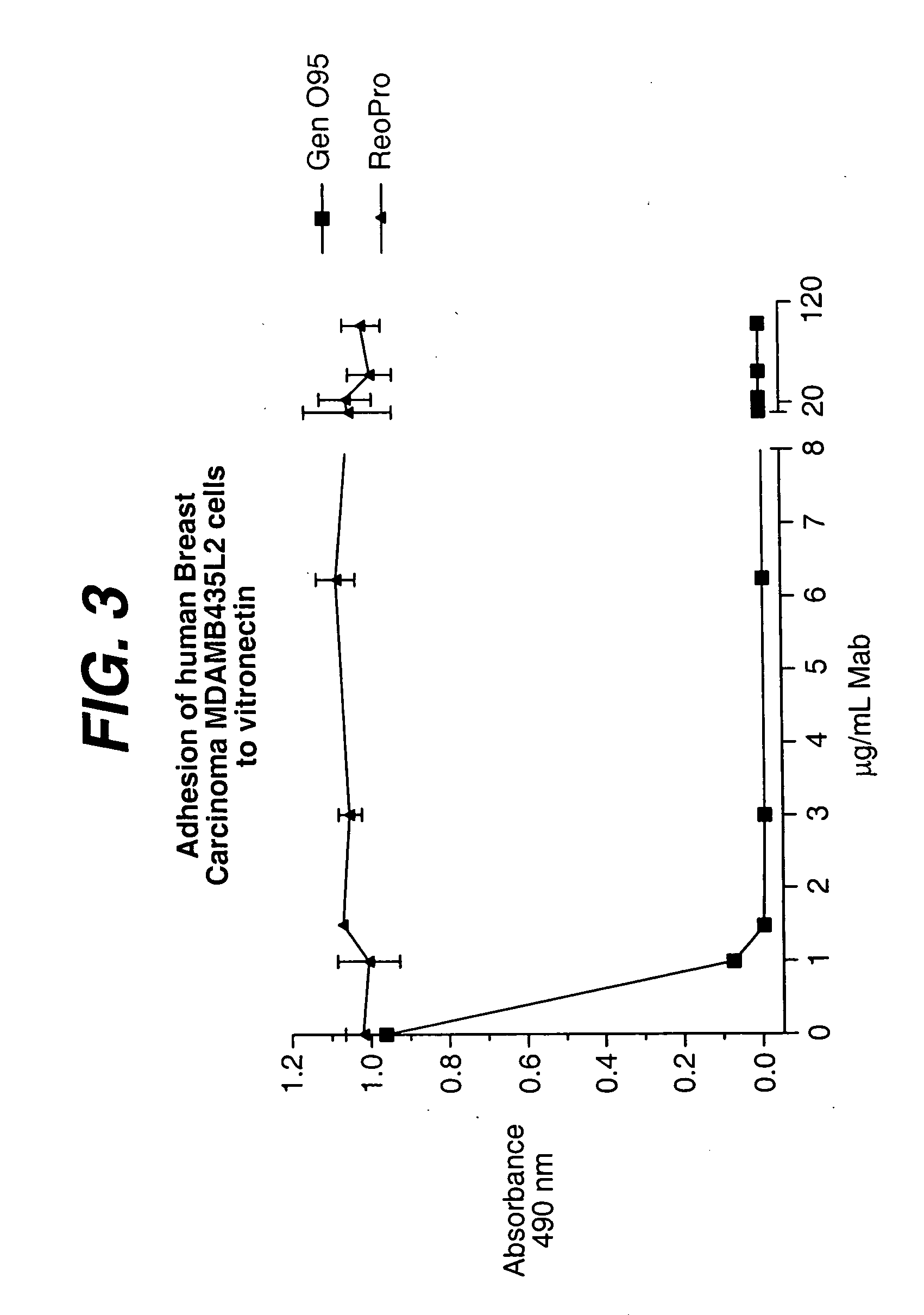Anti-integrin antibodies, compositions, methods and uses
a technology of antiintegrin and composition, applied in the field of antiintegrin antibodies, can solve the problems of reducing the therapeutic benefit of the patient, eliciting an immune response, and unsuitable administration of drugs
- Summary
- Abstract
- Description
- Claims
- Application Information
AI Technical Summary
Benefits of technology
Problems solved by technology
Method used
Image
Examples
example 1
Cloning and Expression of Alpha-V Subunit Antibody in Mammalian Cells
[0258] A typical mammalian expression vector contains at least one promoter element, which mediates the initiation of transcription of mRNA, the antibody coding sequence, and signals required for the termination of transcription and polyadenylation of the transcript. Additional elements include enhancers, Kozak sequences and intervening sequences flanked by donor and acceptor sites for RNA splicing. Highly efficient transcription can be achieved with the early and late promoters from SV40, the long terminal repeats (LTRS) from Retroviruses, e.g., RSV, HTLVI, HIVI and the early promoter of the cytomegalovirus (CMV). However, cellular elements can also be used (e.g., the human actin promoter). Suitable expression vectors for use in practicing the present invention include, for example, vectors such as pIRES1neo, pRetro-Off, pRetro-On, PLXSN, or pLNCX (Clonetech Labs, Palo Alto, Calif.), pcDNA3.1 (+ / −), pcDNA / Zeo (+ / ...
example 2
Method of Making and Characterization of Non-Limiting Example of Fully Human Alpha-V Subunit Antibody
[0269] Summary.
[0270] (CBA / J×C57 / BL6 / J) F2 hybrid mice (Taylor et al., International Immunology 6:579-591 (1993); Lonberg et al., Nature 368:856-859 (1994); Neuberger, Nature Biotechnology 14:826 (1996); Fishwild et al., Nature Biotechnology 14:845-851 (1996)) containing human variable and constant region antibody transgenes for both heavy and light chains were immunized with human placental αVβ3. One fusion yielded 2 totally human αVβ3 reactive IgG1κ monoclonal antibodies, named CNTO 95 and GenO.101. The totally human anti-αVβ3 antibodies were further characterized and both were found to be reactive to the αVβ3 and αVβ5 subunits suggesting specificity for the shared alpha chain of both molecules. One Mab, CNTO 95, also known as CNTO 95, inhibits the binding of both αVβ3 and αVβ5 to vitronectin in cell based assays.
[0271] Abbreviations:
[0272] BSA—bovine serum albumin
[0273] CO2—c...
example 3
Binding Affinities for Alpha-V Subunit Antibody
[0344] CNTO 95, (CNTO 95) as described in Example 2, is a human monoclonal antibody generated by immunizing (CBA / J×C57 / BL6 / J, GenPharm International) F2 hybrid mice with αvβ3 integrin purified from human placenta. The antibody is composed of human variable and IgG1 kappa constant regions and found to be reactive to both αvβ3 and αvβ5, suggesting a specificity for the alpha chain shared by both integrin molecules.
[0345] The purpose of this study is to characterize the binding affinity of GenO.05 for αvβ3 and αvβ5 purified integrins and for beta integrin expressing cell lines. For further characterization, the binding values will be compared between CNTO 95 and ReoPro.
[0346] Abbreviations
[0347] KD, equilibrium dissociation constant, expressed in M
[0348] Bmax=maximal number of binding sites
[0349] Materials and Methods
[0350] Cell Lines
[0351] A375S2 cells, a human melanoma cell line expressing αvβ3 and αvβ5 integrins, were cultured i...
PUM
| Property | Measurement | Unit |
|---|---|---|
| dissociation constant | aaaaa | aaaaa |
| dissociation constant | aaaaa | aaaaa |
| dissociation constant | aaaaa | aaaaa |
Abstract
Description
Claims
Application Information
 Login to View More
Login to View More - R&D
- Intellectual Property
- Life Sciences
- Materials
- Tech Scout
- Unparalleled Data Quality
- Higher Quality Content
- 60% Fewer Hallucinations
Browse by: Latest US Patents, China's latest patents, Technical Efficacy Thesaurus, Application Domain, Technology Topic, Popular Technical Reports.
© 2025 PatSnap. All rights reserved.Legal|Privacy policy|Modern Slavery Act Transparency Statement|Sitemap|About US| Contact US: help@patsnap.com



